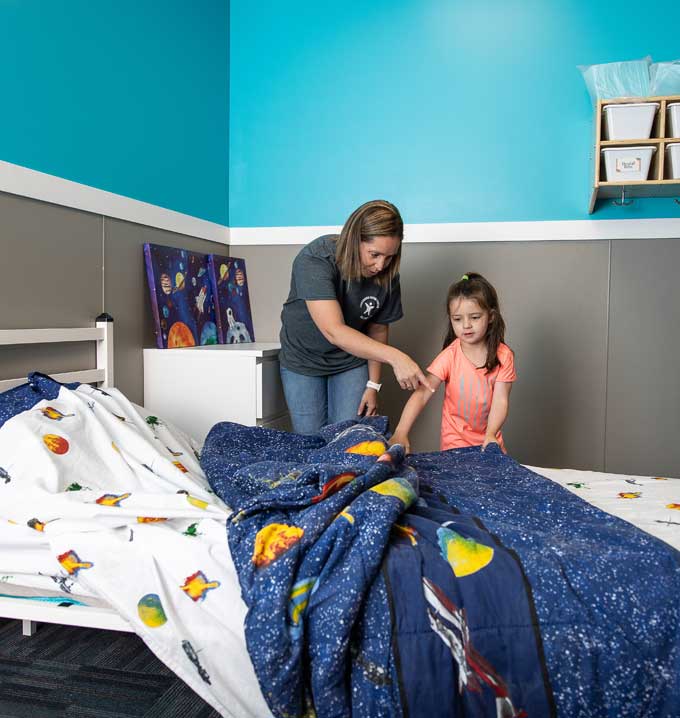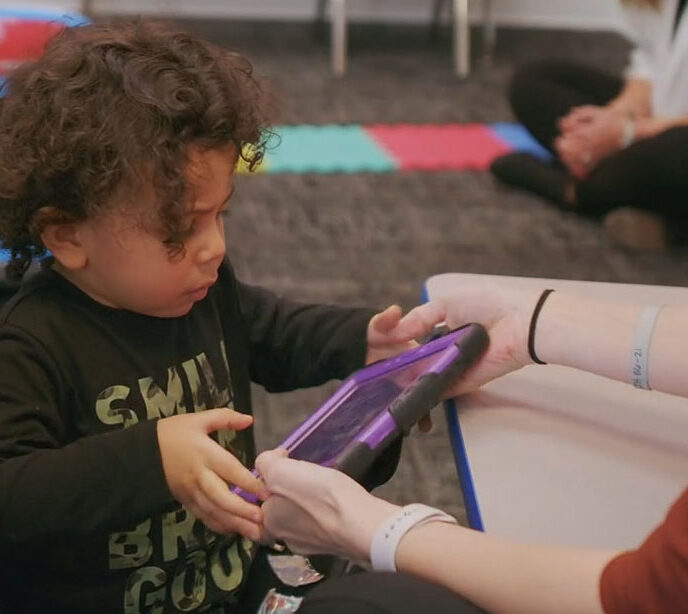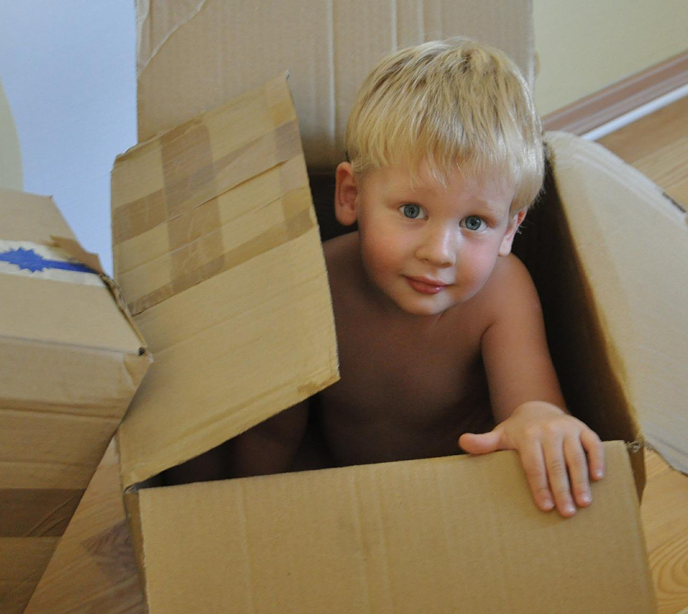Tips for Creating a Sleep Schedule
From difficulty relaxing to irregular melatonin levels, both autistic children and adults may experience trouble falling and staying asleep. Learn how to better manage your child’s sleep schedule by creating a healthy bedtime routine with these expert tips.

Autism and Sleep: Tips for Creating a Sleep Schedule
From difficulty relaxing to irregular melatonin levels, both autistic children and adults may often experience trouble falling and staying asleep. A 2022 study published in Frontiers in Psychiatry showed that up to 80% of children with Autism Spectrum Disorder (ASD) experience sleep problems, which can have a significant impact on their overall well-being and daily functioning.
Join us as we explore how and when to start a bedtime routine, with helpful tips from our experts.
How does autism affect sleep?
The exact cause of sleep difficulties in autistic individuals is not fully understood. However, research suggests that there may be several factors involved, such as sensory processing issues, anxiety, medication side effects, and co-occurring medical conditions.
Lack of quality sleep can have a profound impact on any child. It can lead to daytime fatigue, irritability, and difficulty concentrating, which can affect their behavior and ability to learn. Poor sleep quality has also been linked to increased aggression and self-injurious behavior in some autistic children. Additionally, sleep problems can exacerbate existing sensory and anxiety issues, creating a vicious cycle of disrupted sleep.
Here are 10 tips for helping your child get the best sleep possible.
1: Maintain a consistent wake-up and night routine
The key to creating a successful sleep schedule is to maintain a consistent wake-up and bedtime every day, including weekends. This helps regulate your child’s circadian rhythm (or body clock) and promotes better sleep quality at night. It’s also essential to establish a nighttime routine, such as brushing teeth, changing into pajamas, and reading a bedtime story.
2: Implement appropriate bedtime boundaries
Setting boundaries around bedtime is crucial for all children. Clearly communicate and uphold the rules and expectations around bedtime, such as no electronics or snacks before bed. This helps your child understand what behaviors are acceptable and expected before bedtime.
3: Avoid stimuli
Various factors can influence an autistic child’s sleep habits, so it’s important to practice good sleep hygiene. This includes avoiding stimulants such as caffeine and sugar close to bedtime, as they can interfere with your child’s ability to fall asleep. Similarly, screen time should be limited in the hours leading up to bedtime. The blue light emitted by screens can disrupt the natural sleep cycle and make it more difficult for your child to fall asleep. Creating an environment that encourages relaxation and sleep, free from these stimulants, can significantly improve your child’s autism and sleep habits.
4: Create healthy sleep associations
Sleep associations are essential for all children, but especially for those with autism. These are things that your child associates with sleep, such as a favorite stuffed animal or a special blanket. Introducing these items into their bedtime routine can help them feel more comfortable and at ease.
5: Curate a safe, comfortable sleeping environment
Creating a safe and comfortable sleeping environment is essential. This may include using calming colors in their bedroom, minimizing distractions, and making sure the room is at a comfortable temperature. Another factor to consider is their pajamas and bedding. Because of sensory sensitivities, you’ll want to ensure that they are sleeping in and on soft, breathable fabrics that don’t cause any irritation.
6: Do relaxation training
Autistic individuals may have difficulty relaxing their bodies and calming their minds before bedtime. To combat this, you can try relaxation training techniques such as deep breathing exercises or progressive muscle relaxation. These techniques can help your child unwind and prepare for sleep. Try a few techniques to see which they enjoy the most, then practice consistently as part of their bedtime routine. Speak to a professional to learn how to practice these helpful autism tools for parents.
7: Eliminate household noises
Certain noises can be disruptive and make it difficult for your child to fall asleep. To create a more peaceful environment, eliminate any household noises that may disturb them. This could include using a white noise machine or earplugs to block out external noises.
8: Use a bedtime social story
Social stories are visual aids that can help children with autism understand and process new situations. By creating a bedtime social story, you can prepare your child for the steps involved in getting ready for bed. This can help make their bedtime routine more predictable.
9: Introduce a weighted blanket
Weighted blankets have been found to be beneficial for autistic children as they provide deep pressure and can help promote relaxation. While a 2014 study published in Pediatrics suggests that weighted blankets neither increase sleep time nor decrease time spent falling asleep, they do provide extra comfort and soothing, making bedtime more appealing.
10: Ensure adequate physical activity each day
Regular exercise can help improve sleep quality and regulate the body’s natural sleep-wake cycle. Make sure your child gets enough physical activity during the day to promote better sleep at night. To make this part of your child’s bedtime routine, you can start doing family walks before dinner.
Small changes lead to big improvements with Lighthouse Autism Center
Discover more helpful autism resources from our team of experts. For even more guidance and support, consider Lighthouse Fusion ABA therapy. Our innovative method combines speech and ABA therapy, providing your child with one-on-one learning with a team of dedicated professionals.
Together, we can unlock your child’s potential
Related News

10/07/2025
PECS and Its Use in ABA Therapy – Lighthouse Autism Center
The picture exchange communication system, or PECS, is a teaching system that can help an autistic child or another individual with speech difficulties improve their communication skills. We take a look at PECS’ role in ABA therapy and unpack how it works. What Is the PECS System and How Is It Used In ABA Therapy? […]

08/13/2025
ABA Therapy Tips for Taking Your Autistic Child to the Dentist
Taking Your Autistic Child to the Dentist For any child, and even adults, a trip to the dentist can often be filled with anxiety, fear, and discomfort. For a autistic child, especially, these feelings can be even further heightened by sensitivities to noise, smell, and touch. To make this experience better for both the child […]

08/13/2025
Tips for House Hunting with Your Child on the Spectrum
Guidance for Families with Children with Autism when Moving Moving is always a stressful and complicated endeavor. But when you have a child on the autism spectrum, the thought of packing up your household and moving somewhere new can seem like a near-impossible task. Parents often worry that their children will get overwhelmed by this […]


